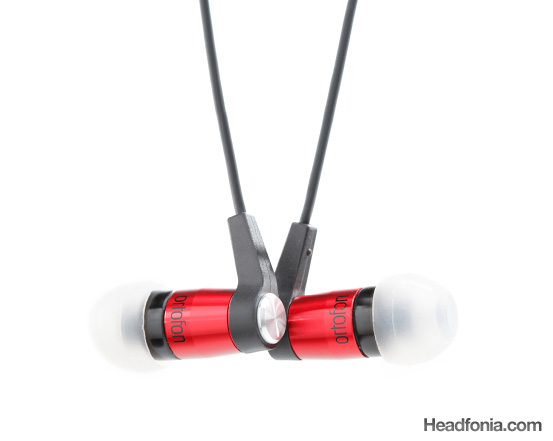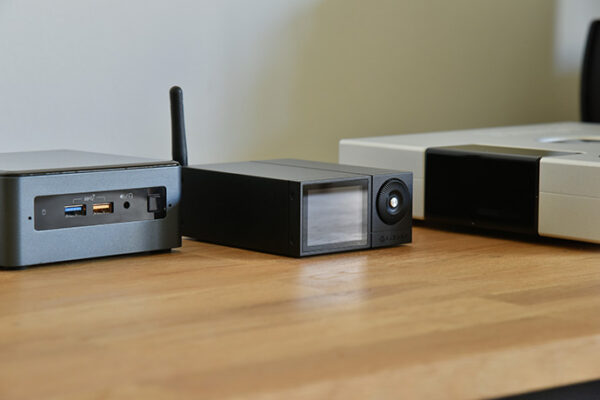Ortofon is a Danish company who makes high end cartdriges, stylus, tonearms, as well as boutique audio cables. When a company with such decides to start making IEMs, naturally our expectation is very high. The Ortofon e-Q7 IEM seems to be targeted mainly for the Japanese, as it is manufactured in Japan, comes with a Japanese/English user manual, and has the kind of extravagant packaging that’s the standard of anything for sale in Japan. It seems logical then, if the Ortofon e-Q7 has a fairly analog sound signature that vinyls are most famous for, combined with a certain mellow signature that seems to be the preferred sound on Japanese audio products. At the moment, there are not many places where you can get the e-Q7 IEM outside of Japan, with the exception of ALOAudio and Jaben Networks being two of the few places that carry them.
I received the Ortofon e-Q7 in the midst of writing of a group comparison of single driver IEMs and a group comparison of dual driver IEMs. It would be logical to compare the e-Q7 with the other single driver IEMs, but the e-Q7 is priced at the level of triple driver IEMs and I thought that comparing the e-Q7 with single drivers simply won’t do it justice. Therefore I’m writing a separate article just for the e-Q7.
Without getting too long and winded, the e-Q7 specializes on the midrange, and is especially great with vocals. The driver tuning is quite above average, and probably among the best ones if you are a vocal lover. The midrange is smooth, warm, full bodied, lush, just everything you would expect for a good vocal reproduction. Tube amplifiers can sound very mellow and thick, and the e-Q7 sounds like it has one of those tube amps permanently wired inside its housing. The e-Q7 is quite similar to the Shure SE530 in that they’re both very good with midrange, and so I will be comparing the e-Q7 to the SE530 later down the article.

It’s true that at the end, what we look for is a good musical sound, and in that sense, the e-Q7 delivers. The frequency balance is very good, and I find it to sound pleasing for a lot of music. The sound is warm, with enough treble sparkle and bass quantity, yet never going overboard. The treble almost never tires the ears, and there’s enough bass to maintain a good balance of the frequencies. The treble is not very ambitious, giving just enough sparkle, and at the same time, staying away from any hot treble presentation and managing to suppress any sibilance you might find in a recording. The e-Q7’s treble is probably one of the best tuned among other IEMs. It doesn’t really have the edge for more energetic music such as rock, and the clarity and extension for classical, but the treble is just right for most of the mainstream music out there.
The bass rather focuses on the upper bass frequencies, and just like the overall voicing of the e-Q7, is tuned more for slow jazz, vocal, audiophile, stuff. It goes well for those music, but for those looking for fast, focused, articulate, and low extended bass better look elsewhere. I do find that the bass gets a little uncontrolled when you start on playing faster music, but again I do think that the e-Q7 is not voiced for fast paced music.









Noir
Great review there, even if i haven't auditioned at least i got the impression before buying it.
if its true that it tuned for asian/japanese music then i'll be happy to buy it since almost 95% of my library are japanese music.
Mike
I wouldn’t say “tuned for asian/japanese music”, but it does have a mellow character that suits female vocals very well.
HC
Hi Mike,
Thanks for the review.
May i know how do they compare against the Klipsch Image X10?
Mike
Hi HC, sorry, no experience with the X10. 🙁
Alexei
Hi, guys im translating this article into russian for my friends. Could you explain with more details the meaning of word “transients”. Perhaps some synonyms or something like that. Thanks in advance. From Russia with respect.
Anonymous
Hi Alexei,
Thanks for the effort for doing the translation.
I tried using Google Translate and come up with some words in Russian
that I am not sure what it says:
http://translate.google.com/#en|ru|transients%0A
Anonymous
If you take a cymbal and hits it, it would make a “crash” sound.
A fast transients would be “crash!” and that’s it.
A slow transients would be something like “crrrrasssshhhhh”.
Or say you have three instruments playing together at the same time.
Fast transients would be “crash! boom! bang!”. Every instrument is clear
and distinct.
Slow transients would be “crrrrashshhsbbbbbooombmbbmbaaaanngggggg”. The
instruments are mingled together and doesn’t sound distinct.
Hope that makes sense 😉